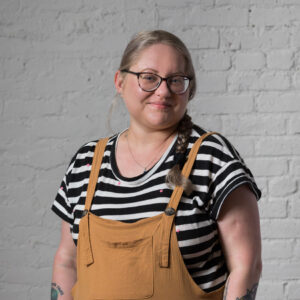There are so many things we love about being a small studio, and one of them is how direct and transparent we can be with our clients.
This results in a more collaborative process where our clients are part of the brainstorming process — they know exactly who we are and can provide feedback without the concern that things might get lost in translation (do you speak project manager?).
This also allows us to be… well, ourselves. We don’t really have “client-friendly” versions of our personalities. We’re an energetic, creative bunch who love to crack jokes and we take our work more seriously than ourselves. We don’t mind our clients seeing us without makeup.
Where Slack Comes In
Internally we use Slack to communicate. Read a good book recently? That goes over in #SimpaticoCritiques. Want to give a shoutout to someone for their awesome work? Head on over to #SimpaticoAwesome. #SimpaticoSocial is for aggregating posts from all our social channels, but our trusty IFTTT trigger takes care of that automatically.

A typical day over at #SimpaticoAwesome
We also use Slack with all of our clients if it’s what they prefer. Sometimes they’ll bring us over to their workspace, and other times we’ll bring them into ours. It’s like entering someone’s house for the first time; “Should we take off our shoes? Where should we put our coats? Oh we just love what you’re done with your #general.” But soon we know where the water cups are and which bathroom is for guests only.
While Slack is super effective in making communication smoother with our clients, we’ve also noticed that it creates non-work related conversations. A simple “So, what do you have planned for the weekend?” can end up in an hour long chat about interesting things about our hobbies, pasts, favorite foods, etc. (true story).
Every client is different, and we certainly don’t want to force anyone into casual conversation or make for an awkward case of TMI. However, when a Slack chat with a client takes a mutual turn for funny gifs (Giphy integration FTW) and photos from our blunder years (yes, I had shoulder-length curls in high school), we’re always up for it. It really does allow our personalities to surface and adds to the kind of relationship we strive to foster with our clients — upright and authentic in the joint pursuit of solving a design challenge.











